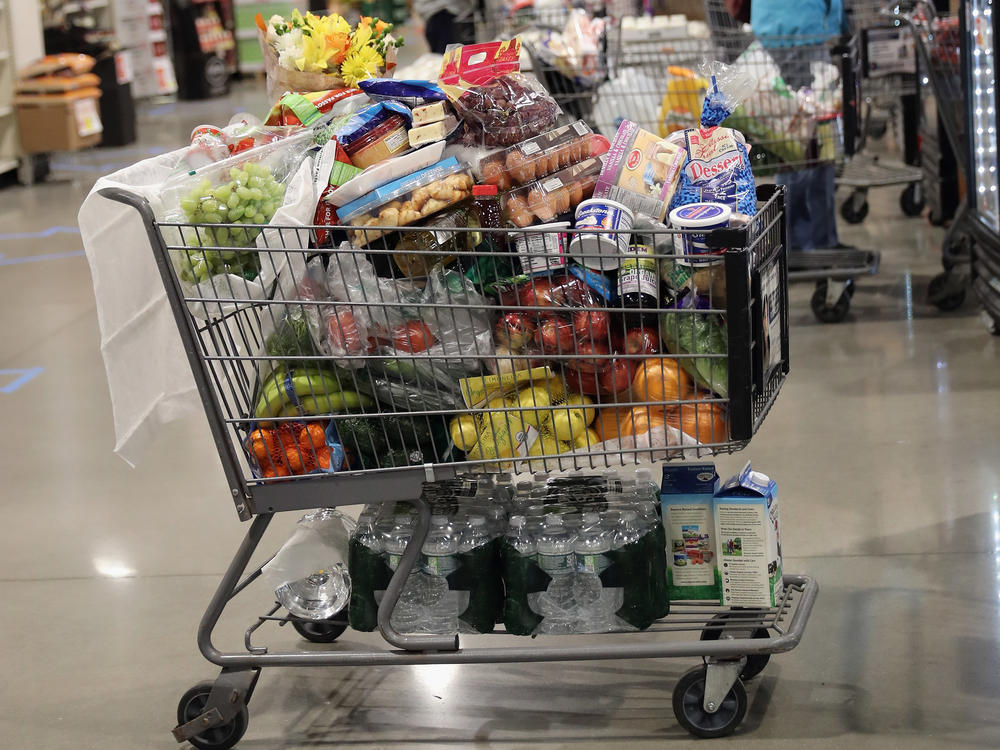Section Branding
Header Content
No, You Are Not Imagining It. Prices For A Lot Of Things Did Jump In April
Primary Content
You may have already noticed it, but yes, many things you need or love have gotten more expensive, a lot more expensive.
Consumer prices surged 4.2% in April from the depressed levels of a year earlier when the global economy was hit hard by the coronavirus pandemic, according to the Labor Department on Wednesday.
That was the largest 12-month increase since a 4.9% one in September 2008 in the depths of the global financial crisis, the Labor Department added.
Prices rose 0.8% on a monthly basis.
The accelerating inflation comes as companies have been forced to pay more to secure critical materials such as lumber and steel amid continued disruptions to the global supply chain. And the government also pumped trillions of dollars into the economy in a bid to blunt the impact from the coronavirus, contributing to inflation.
Price increases affected a range of goods from big-ticket items such as used cars to kitchen staples such as bacon. Airfares and hotel prices also jumped as rapid vaccine rollouts are encouraging Americans to travel again.
"Everything you can think of is going up," says William Lee, chief economist at the Milken Institute.
For an economy finally starting to roar back from the pandemic recession, higher inflation poses a major potential risk. Companies have reported record profits, but they could struggle if they continue to face higher costs. And millions of Americans remain unemployed or struggling, and they are likely to be disproportionately affected by higher prices.
What matters most is how long these higher prices last.
"The one thing economists always try to do is distinguish between a price pop and inflation," Lee says.
Federal Reserve Chair Jerome Powell has argued the economy is experiencing the former. The policymaker insists the increase in prices is going to be short-lived – or "transitory" – reflecting supply chain snarls and pent-up demand from Americans now happy to spend money on trips or outdoor activities.
The Fed wants inflation to be around 2% over the long term, and policymakers have committed to keeping interest rates near zero for the time being. But the risk is what happens if prices continue to rise beyond what the Fed is expecting.
Kellogg's and General Mills have already raised prices for cereal, for example. In recent weeks, airfares have gotten more expensive, and so have everyday items from Coca-Cola to fuel.
Another factor is wages. Restaurants and hospitality are among the sectors that have struggled to find workers recently over what economists believe is a range of factors, including health concerns and extended unemployment benefits provided by the government.
That's forcing some businesses to offer higher wages or benefits in a bid to attract workers, which could contribute to higher inflation.
"We are rebooting the global economy, and it takes time to work through these supply chain issues, and to connect workers with employers," says Julia Coronado, president of MacroPolicy Perspectives, an economic consulting firm.
"It's probably going to take us all summer, and into the fall, to get a sense of where the dust settles, and what the post-pandemic economy is starting to look like."
Copyright 2021 NPR. To see more, visit https://www.npr.org.

